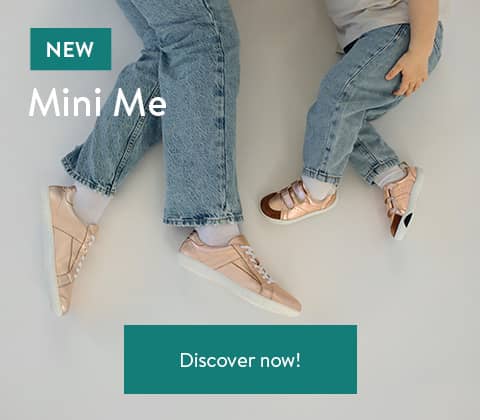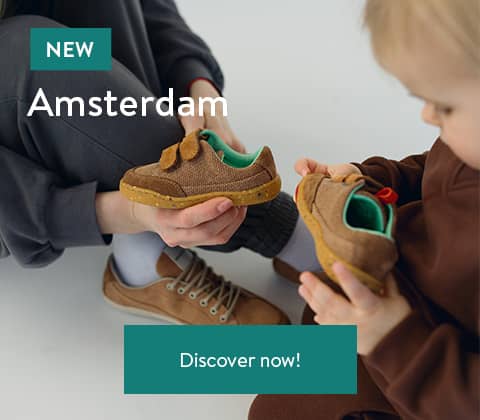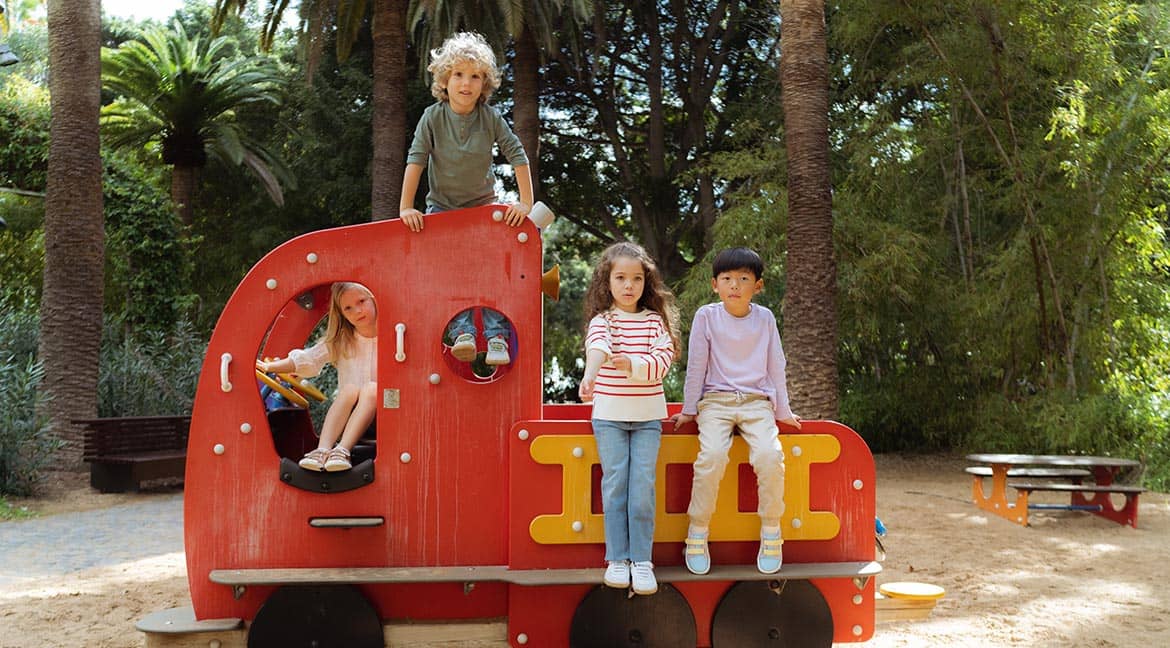Healthy children's shoes — what are the best shoes for nursery school?
Children's feet are most comfortable if they can explore the world barefoot. But that isn't always possible. Especially at nursery school, children need healthy footwear that will take the rough with the smooth. Which nursery shoes are the best and how practical are barefoot shoes for forest school nurseries? We offer some insights.
Children's little feet want to explore the world and are most comfortable if they can go barefoot. But that isn't always possible. Especially at nursery school, children need healthy, robust shoes that will take the rough with the smooth. So, which nursery shoes are the best and how practical are barefoot shoes for kids? We offer some insights.
By the time children start walking, if not before, it is essential to equip them with healthy footwear. But finding high-quality children's shoes for nursery and preschool can often be a challenge for parents. On the one hand, children's shoes should be robust, but on the other hand they also need to be sufficiently flexible to allow children's foot muscles to develop properly. And as soon as a child's shoes fit, it seems they have already grown out of them. Understandably, parents often find themselves asking how much money they should spend on good nursery shoes. Quality is not always determined by price in this context. The fit is the most important factor in avoiding potential foot deformities in childhood. And children's feet can be quite demanding from this perspective.
The right nursery shoes — it's all about the fit
When choosing the right nursery shoes, the first thing to do is to work out what size is required. To do this, the child should stand barefoot on a thick sheet of paper. Next, trace around the child's feet. Another 12 to 17 mm are added to the longest toe. This is the standard for fitting children's shoes, which should be this number of mm longer than the feet. Now cut out a strip of paper about 3 cm wide lengthwise from the traced feet. You can put this strip of paper into the child's shoe. If it lies flat inside, this confirms that the shoe is the right size. If the strip of paper bends, the shoe is too short or too small.
Outdoor children's shoes for nursery — flexible, robust and non-slip
Once you have worked out the correct shoe size, the next question is what material to choose. Children's nursery shoes should always be flexible, robust and non-slip. Especially for forest nursery schools, high-quality outdoor children's shoes are ideal to withstand all weather conditions. Remember, the softer and more flexible the children's shoes, the better their little feet can move, which offers more targeted muscle training. As already mentioned with the fit, the correct inside length of children's shoes is important. If the nursery shoes are too tight or too wide around the ball and heel, for example, you should change to a different model. Very important: the sole of children's shoes should always be non-slip and flexible. It is also good to have a footbed that does not fix the shoe too tightly. Since good nursery shoes also need to be relatively robust, parents should look for high-quality materials. A robust children's shoe should be moisture-wicking while also offering reasonable waterproof properties, so the child doesn't get soaked the very first time they come across a puddle. Parents will sometimes need to be patient when choosing the right shoes for nursery because children's feet are unique and not every shoe will fit. Our article with Tips for healthy children's feet also shows how important it is for children to have good footwear.
From spring to winter — the right nursery shoes for all seasons
Especially at forest schools, children spend most of their time outside. This makes it all the more important to ensure children's little feet are protected by footwear that can handle any weather. It's also sensible for parents to provide a spare pair of shoes in case of any mishaps, especially in wet weather.
The best nursery shoes for autumn and winter are
- non-slip and robust
- well-lined and dirt repellent
- suitable for getting wet
- made of washable, durable materials
- lined rubber boots for rainy days
Lightweight nursery shoes for spring and summer are
- non-slip
- light, soft and flexible
- well-fitting sandals that ideally cover sensitive toes
- made of moisture-regulating / breathable materials
- unlined boots or wellies
Slippers for nursery — what are the best things to look out for?
There are now different opinions on whether children should wear slippers at nursery or preschool. Some people recommend sturdy nursery slippers that can also get dirty from time to time. Other nurseries and some childminders recommend not using slippers at all. Non-slip socks are a popular alternative to nursery shoes. One advantage is that socks are easier to clean than children's slippers. Socks also make it more straightforward for parents to check whether their child's feet have grown again. The disadvantage is that — in contrast to nursery slippers — non-slip socks do not offer the necessary stability for some indoor games. Parents should seek advice from the relevant nursery or childcare provider.
















